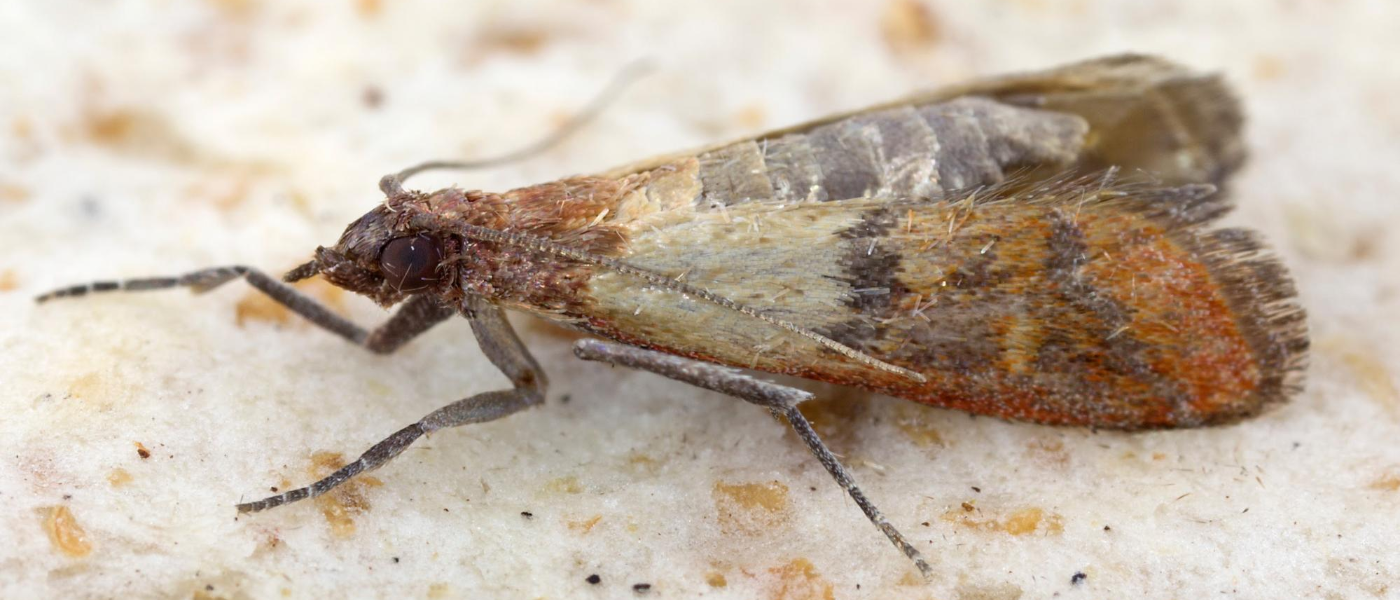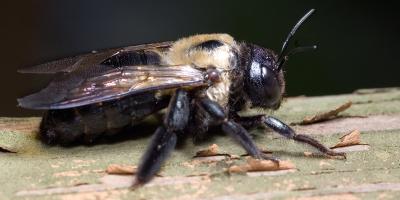Moths in Your Pantry? Here's What to Do.

As you’re stocking your pantry for the holidays this year, you may come across one ingredient you’ll surely never want to include in your pumpkin pie or turkey stuffing recipe: pantry moths. Pantry moths, or Indian meal moths, are the most common pantry-dwelling pest in the United States. Pantry moths feed on all sorts of stored food products, from grains like flour and cornmeal to nuts, seeds, beans, dried fruit, spices, cereals, and more.
How to Spot a Pantry Moth
You might encounter pantry moths in their larval form, as little maggot-like worms squirming in a box of cake flour, or as full-grown adults, about an inch long with sharply tapered brown and off-white wings. Or you might discover remnants of their webbing, the silk-like cocoon they spin when transitioning from larvae to adult, attached to the bottom of a canned good, on the underside of a bag of flour or in the corners of your cabinets.
If your pantry has been invaded by Indian meal moths, don’t blame yourself—they could wind up there even if you keep your kitchen in tip-top shape. More likely than not, pantry moths probably laid their eggs at the food processing facility or grocery store and all you’re guilty of is giving them a ride home to your kitchen. It only takes a few eggs to kick off the pantry moth life cycle, and before long you could have a full-blown infestation.
The Life Cycle of a Pantry Moth
Pantry moths start out as eggs, laid in clusters of about 400 at a time. After just seven days, those eggs hatch into larvae—that’s the stage that causes the most damage to your stored food. For two to three months, the tiny, wormlike larva will eat through your dry foods, leaving behind waste and casings, contaminating everything they encounter.
Eventually the larva will decide it’s time to grow up, and will do so by spinning a cocoon in a crack, corner or crevice, where it will spend about 15 to 20 days transforming into an adult moth. When it emerges as an adult, the pantry moth does not have working mouthparts and cannot eat. Its sole purpose in life at this point is to find a mate to reproduce before it dies in one or two weeks.
Perhaps It’s Not a Pantry Moth…
If your problem doesn’t quite fit this description, you may actually be dealing with weevils, flour beetles, cigarette beetles or warehouse beetles. They, too, munch on dry food stored in your pantry and can cause just as much damage as pantry moths. In other words, there’s no such thing as “the lesser of two weevils” when you’ve got pantry pests—the solution is the same no matter which unwelcome guest you’re dealing with.
How to Spot a Pantry Moth
First, inspect all the food in your pantry, looking for the wormlike larva and remnants of silky cocoons. Throw away anything you find with living insects or strange particles that could be feces or discarded casings. It is also good practice to look for any boxes or bags with holes that could have been chewed out by these pests, even if you don’t necessarily see other evidence within the grains itself.
If the problem seems widespread, it may be best to toss all grain-based items that aren’t hermetically sealed, like canned goods. Be sure to take the garbage directly outside, and use a vacuum to clean out every nook and cranny of your kitchen cabinets and closets.
Ultimately, you’ll want to contact a pest control professional. We’ve made it easy—request a free quote and let us help you prep your kitchen for the holidays… and only for those guests you’ve actually invited!



